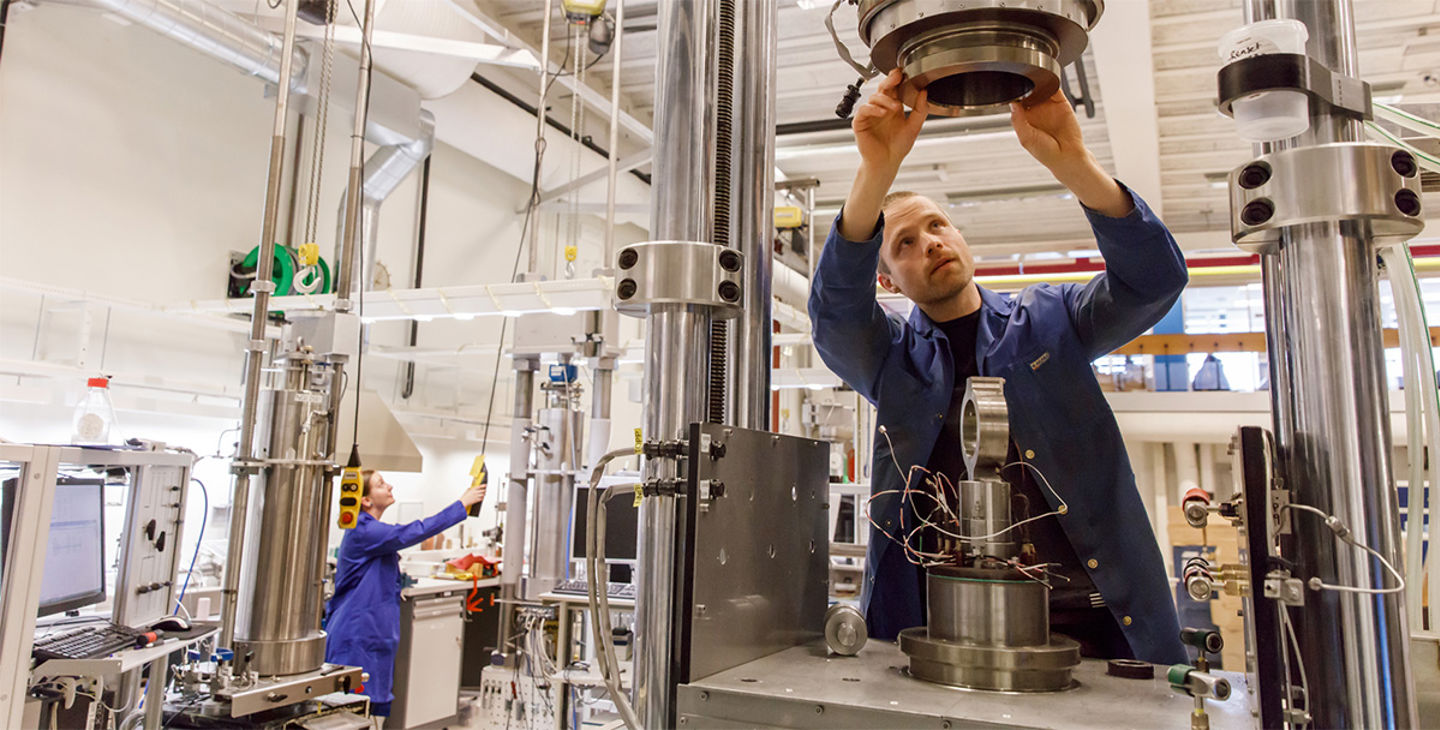Rock mechanics laboratory

NGI has an advanced rock mechanics laboratory with equipment for geomechanical and geophysical testing of rock samples at high stress and temperature.
High-quality rock mechanics and geophysical datasets are essential for various applications within the petroleum industry, geothermal energy production, and storing CO2 and radioactive waste. Examples are:
- well stability
- sand production
- hydraulic fracturing
- reservoir flow
- compaction and surface subsidence
- the integrity of faults and roof rock
- rock physics and geophysical studies
- instrumentation and monitoring
NGI offers
- test facilities for standardized and specialized tests (e.g., R&D purposes)
- workshop for the design and production of own laboratory equipment, including instrumentation
- expertise and software for the design and analysis of laboratory experiments
The following tests are offered:
- classification and index testing
- simple strength tests
- uniaxial compressive strength/ compressive strength ("UCS test")
- indirect tensile strength/ tensile strength ("Brazil test")
- point load test - triaxial testing (standard)
- shear test with isotropic or anisotropic consolidation (drained/undrained)
- compaction test (1D/K0) and oedometer testing
- the possibility of a flexible stress path and cycling of total stress and pore pressure
- measurement of thermal expansion coefficient
- permeability testing
- HPHT- High-pressure and high-temperature testing - geophysical/rock physics tests
- measurements of ultrasonic P and S wave velocities and electrical resistivity can be made in all triaxial cells - acoustic emission (AE) testing
- AE testing in our own specially adapted triaxial setup - CO2 flow tests
- multiphase flow at different temperature and pressure conditions (including supercritical CO2) in combination with geophysical measurements - triaxial test in CT scanner
- visualization of deformation and fluid flow, including geophysical measurements - direct shear test (shear box test)
- friction and deformation characteristics of cracks
- fluid flow and conductivity on the fracture plane
- "Velocity stepping test," varying shear speed for assessing the seismic potential of cracks and faults - advanced characterization
- CT scanner for 2D and 3D visualization (structures, fracture pattern, etc.)
- microscope (optical and SEM) for microtexture
- photogrammetry for characterizing the crack surface

Magnus Soldal
Head of Rock mechanical and geophysical testing Rock Mechanical and Geophysical Testing Magnus.Soldal@ngi.no+47 411 29 454